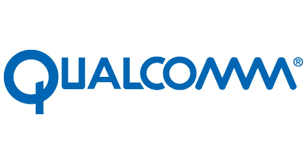Qualcomm Technologies, Inc., a subsidiary of Qualcomm Incorporated, and Ford Motor Company, are accelerating the development of connected cars with the extension of their long-standing relationship into the development of advanced connectivity systems for Ford vehicles and upcoming Cellular Vehicle-to-Everything (C-V2X) technology testing. C-V2X is a highly advanced wireless connectivity technology for safety-conscious and automated driving solutions, which has the potential to help cities create more capable infrastructure as they look at how to connect vehicles to their surroundings, and to larger communications systems, facilitating the development and delivery of smart, connected transportation throughout the world. The technology is planned for further field validations beginning in 1H 2018.
Qualcomm Technologies’ first C-V2X commercial solution, the Qualcomm 9150 C-V2X chipset, is expected to be commercially available the second half of 2018.Depending on the results of those field validations, and a change to the current regulatory environment, this technology may be featured in vehicles in the near-future. Ford and Qualcomm Technologies are currently working together on the first announced U.S. C-V2X trials in San Diego, along with additional trials in Detroit, with both trials utilising the 9150 C-V2X solution.
As the automotive industry prepares for advancements towards 5G, Qualcomm Technologies and Ford plan to explore next-generation telematics platform concepts featuring C-V2X technology.
Using direct communication mode, C-V2X is designed to allow vehicles to directly communicate with other vehicles, pedestrian devices, and roadside infrastructure, such as traffic signs and construction zones, without the involvement of a cellular network, or cellular network subscription.
Importantly, these capabilities supported by some of the latest advancements in wireless technology based on today’s standards, such as 3rd Generation Partnership Project (3GPP) Release 14 specifications and ITS standards, while also providing a strong path towards 5G. This means C-V2X-enabled vehicles are designed to remain compatible with future devices, services and infrastructure that connect via 5G technology.

Wireless communication is expected to play important role as autonomous vehicles are expected to be ubiquitous on city streets today and in the future. By facilitating communication between vehicles and a variety of other Smart City constituents, C-V2X technology complements Advanced Driver Assistance Systems (ADAS) sensors to help build a comprehensive picture of the world in which vehicles must navigate.
C-V2X is designed to allow vehicles to provide information about the vehicle’s surroundings and identify objects that may be out of view, including accidents that are further down the road, or pedestrians that are obstructed by large trucks or buildings.
As a part of the ongoing relationship, the companies are working on automotive telematics platforms with integrated Qualcomm Snapdragon LTE modems to provide the fast, reliable and efficient connectivity needed for telematics applications, connected navigation and infotainment systems. As the automotive industry prepares for advancements towards 5G, Ford and Qualcomm Technologies plan to work on next-generation telematics concepts and solutions featuring C-V2X technology.
“Our goal is to provide the smartest and best connected, human-centered experiences for our customers around the world,” said Don Butler, Ford Motor Company. “Ford and Qualcomm Technologies believes that C-V2X holds great potential for the cars of the future. We’re excited to prove its ability to create a more connected environment where people can move more freely.”
“This relationship with Ford is part of a leading effort in the automotive industry in accelerating the adoption of Cellular-V2X into production vehicles and provide for enhanced safety, driver assistance and support for autonomous driving,” said Nakul Duggal, vice president of product management, Qualcomm Technologies, Inc. “Connectivity is the cornerstone for innovation in vehicles, and we are excited to work closely with Ford on its goal to integrate cellular connectivity on the vast majority of its vehicles, expedite adoption of C-V2X, and to work towards 5G.”
Comment on this article below or via Twitter: @IoTNow_OR @jcIoTnow










